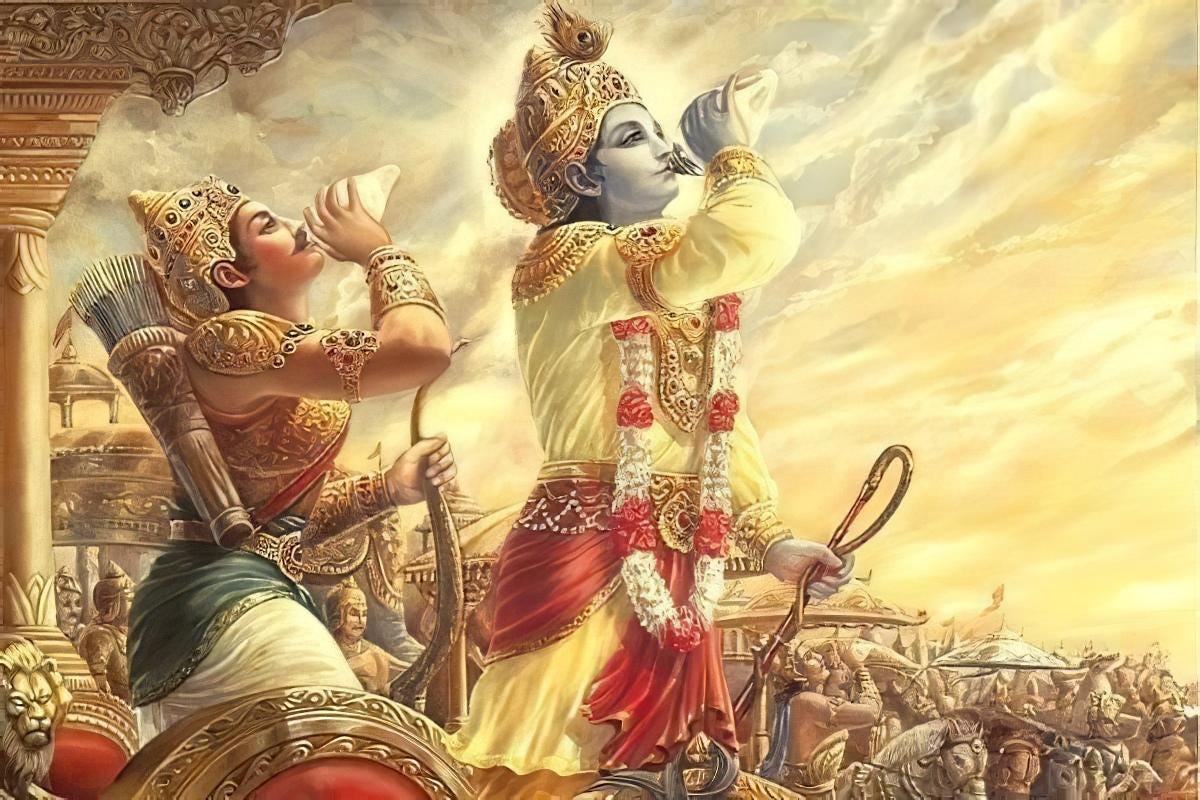Four questions: The characteristics of a pure devotee (Bg 2.54)
Arjuna now asks very intelligently what are the symptoms of great devotees. This has two purposes: he wants to learn how to recognize them, and also to understand the path to attain the same platform.
« The Song of God: An in-depth study of the Bhagavad-gītā (Volume 1)
Verse 54: arjuna uvāca
sthita-prajñasya kā bhāṣā, samādhi-sthasya keśava
sthita-dhīḥ kim prabhāṣeta, kim āsīta vrajeta kim
Arjuna said: O Kṛṣṇa, what are the symptoms of one whose consciousness is thus merged in transcendence? How does he speak, and what is his language? How does he sit, and how does he walk?
In the previous verse, Krsna recommended Arjuna to reject fruitive activities and be situated on the platform of samādhi, in complete Krsna Consciousness. For this, He recommended work in devotion and cultivation of knowledge (buddhi-yoga) as the way to become free from material illusion. As we advance on this path, we become gradually equipoised in material happiness and distress, becoming detached from matter. Gradually, we come to the platform of samādhi in Krsna Consciousness.
Arjuna now asks, very intelligently, what are the symptoms of great devotees who attain this platform? This has two purposes: he wants to learn how to recognize them, and also to understand the path to attain the same platform.
Arjuna thus asks four questions that Krsna answers up to the end of the 2nd chapter:
1) What are the symptoms or characteristics of one merged in transcendence?
2) How does he speak? How is his intelligence and words affected by others’ affection, anger, or neutrality? How does he respond to external sources of agitation?
3) How does he sit? In other words, where and how does he refrain from engaging his senses?
4) How does he walk? In other words, how does he act, or engage his senses?
The answers Krsna gives apply primarily to a pure devotee who has surrendered to Him, but secondarily, they also apply to other types of transcendentalists who have become liberated based on impersonal realization. Both the devotee and the impersonalist can reach the stage of liberation, and thus manifest the symptoms described here, but the devotee can go higher, reestablishing his eternal spiritual identity, while impersonalists are able to become free from material contamination, but remain in the orbit of the brahmajyoti, incapable of joining the spiritual planets. Later in the Bhagavad-gītā, Krsna mentions that "One who is thus transcendentally situated at once realizes the Supreme Brahman and becomes fully joyful. He never laments or desires to have anything. He is equally disposed toward every living entity. In that state he attains pure devotional service unto Me." This shows how perfection in devotional service comes after the stage of liberation, being the ultimate perfection.
Main points in the purport of Srila Prabhupada:
"Arjuna said: O Kṛṣṇa, what are the symptoms of one whose consciousness is thus merged in transcendence? How does he speak, and what is his language? How does he sit, and how does he walk?"
a) Just as for everyone, a pure devotee has a specific nature that can be identified by his practical actions in talking, walking, thinking, feeling, etc. The most important symptom is how he speaks, because this allows him to easily identify such a pure devotee and set him apart from other categories of people. He speaks only of Kṛṣṇa and of topics relating to Him. Other symptoms then automatically follow.
« The Song of God: An in-depth study of the Bhagavad-gītā (Volume 1)


